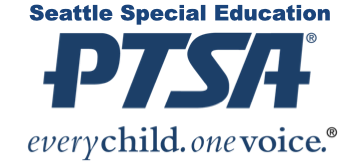Dear Superintendent Jones and School Board,
We have given the district ample time to develop and share strategies for resolving some of the nearly $100,000,000 budget gap. Even by the district’s estimates, school closures alone will not close the budget gap. So far, the district has not shared any options other than the school closure proposals. We need to hear how the district is planning to bridge the gap, outside of the proposed school closures. What other components of the plan can Seattle Public Schools share? Students’ families need to be respected as partners in the proposed changes, as they are directly and indirectly impacted. We already know school staff were instructed to tell parents erroneous information about reductions of services based on a summer audit. They were removing necessary transportation services required by students’ IEPs. This attempt to save funds is contrary to the guidelines in the Individuals with Disabilities Education Act (IDEA).
District officials and staff claim that their focus is the students furthest from educational justice. Yet there has been a lack of transparency around the district’s plans and actions. For example, the option school waitlist management this year felt to many families like manipulation of enrollment numbers at option schools; this created distrust.
The district’s Well Resourced Schools aspiration is an opportunity to shift the staff’s mindset and change the expectations for the district staff, school staff, and entire school communities. For our families to truly feel like partners, we ask for a complete, transparent step-by-step plan. So far, rather than a plan, we have only seen the aspirations of well-resourced schools. Whether or not the closure of any school is truly necessary, we need a transition plan that is centered around the needs of students and their families. Equity cannot be perceived as a barrier to progress; instead, the plan must be rooted in equity. Before decisions are made, we request that the district sets SMART (Specific, Measurable, Attainable, Relevant, and Timely) Goals and keeps the community informed about the district’s proposed plan, which should include:
- A detailed description of each step in the school closure transition, and reasoning behind it that is supported by data.
- A specific timeline for the implementation of each step in the school closure transition.
- The predicted cost/savings for each proposed step.
- A step-by-step plan for professional development that includes inclusionary practices and universal design for learning (UDL) for all staff in SPS.
- A plan for the frequency and type of progress monitoring.
- A plan for accessible community engagement strategies that include families with different backgrounds and demographics.
- An alternative plan (“Plan B”) in case the district’s efforts are not reflected in the district’s progress. For example, who and when would be invited to support the district from the outside? Asking for help is a sign of strength.
The community of people who support students with disabilities needs to see that the district is working on rebuilding trust. A transparent planning process keeps all stakeholders engaged and builds trust.
We initially heard that all special education pathways and services would be offered in every school. This unrealistic suggestion was based on the idea that special education was “a place” or a classroom. It is not. Special education, as well as the Deaf and Hard of Hearing (D/HH) services, highly-capable education, instruction for multi-language learners (MLL), etc., are services. This does not mean that they should be provided in the same manner, in a separate program, or in every school. Here, recognizing the unique needs of each learner is crucial.
The well-resourced schools need to:
- Continue offering and expanding inclusionary practices that provide services to all students without the arbitrary special education pathway designations created by SPS that discourage an inclusion mindset.
- On the exit survey, add a comment box and a question to capture the variety of reasons why students are leaving. Asking what students’ plans are for next year is insufficient.
- Review the benefits of option schools, and recruit a diverse student body for them. Equity at option schools can be improved.
- Preserve and expand on the D/HH program, which could strengthen the sense of belonging in this community.
- Restore and redesign the highly capable service delivery mode to provide equitable access to disabled students.
- Protect the health and well-being of medically fragile students, including by keeping them in a cohort, if necessary.
- Include a full-time nurse and therapists (mental health, OT, SLP, PT, etc.) in every building every day.
- Expand the Dual Language Program
- Replicate the models that are working, such as Option Schools and especially the K-8 programs, to provide multiple pathways to success and meaningful learning opportunities to all students. As PTA leaders and advocates, members of the community, and your constituents, have asked that the school board examine all available options to close the budget deficit before closing schools that provide proven benefits to students and choices to all students in the district.
- Review and improve hiring requirements & practices for staff experienced with UDL and inclusionary practices, and focus on staff education and retention.
We must stop othering students with disability needs by calling them “Special education students” (the preferred term is “disabled students with IEPs” or “students with disabilities who qualify for special education services”) and referring to special education as a place. This non-inclusive language reinforces the segregation of students based on the perceived level of their disability and fails to honor high expectations. To the maximum extent appropriate to each student, disabled students have the right to be educated with their non-disabled peers. This is required by the IDEA least restrictive environment (LRE) requirement and should be the right thing to do based on the district’s values.
Thank you for your service.
In community,
